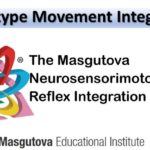47 Achter Rd
Paulshof
Sandton

| The DPRI course provides the foundation for professionals and parents to understand the importance of:
· primary motor reflex pattern maturation, · why a reflex might not be integrated, · the impact a non-integrated reflex can have, and · the MNRI techniques designed to assess and integrate reflexes. Primary motor reflex patterns emerge along a predictable developmental continuum, with each successive reflex emerging to secure a child’s survival and protection as his system matures and advances. When adequately engaged, each reflex anchors neurologically more deeply a physiological, emotional and psychological sense of security, freeing an infant to focus on exploring, learning, and fully advancing through all stages of primary motor reflex maturation. It is through this complete integration process that primary motor reflex patterns form the foundation for related motor reflex schemes (sitting up, crawling, walking, etc.) to mature and for each of us to reach our full potential over time, anchoring emotional and behavioural regulation, and advancing motor, communication, and cognitive learning. Congenital disorders or traumatic events that occur in utero, at birth, or any time after birth, can interrupt the activation, maturation and integration of a primary motor reflex pattern. Depending upon the number of reflexes impacted and the maturational deficits of each impacted reflex, a broad spectrum of life challenges can occur. |








